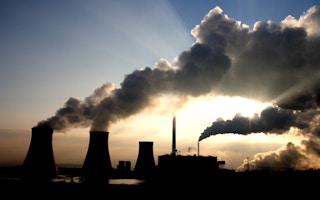China will allow big emitters to use offset credits from nitrous dioxide (N2O) destruction to meet domestic climate targets, giving its nod to a type of project that has been banned in other carbon markets.
The National Development and Reform Commission (NDRC) published on Wednesday a list of more than 120 new types of projects eligible to earn carbon credits that can be sold to power generators and manufacturers facing emission caps under China’s fledgling carbon markets.
The list included destruction of N2O emissions from the production of adipic acid, a component in nylon, sparking concerns that the market might be flooded with “junk” offsets with limited or no environmental value.
“China should ban the use of credits from industrial gas projects, or discount their value,” said Lin Jiaqiao with Beijing-based Greenovation Hub.
Adipic acid N2O destruction accounts for around a fifth of offsets generated in the international UN-regulated carbon market.
“
Adipic acid N2O destruction accounts for around a fifth of offsets generated in the international UN-regulated carbon market
But they have been banned from emissions trading schemes in Australia, Europe and New Zealand after investigations found that some factory owners increased their pollution levels just so that they could destroy more N2O and earn more offsets.
In the international carbon market cheap offsets with dubious environmental value have crowded out more sustainable projects such as building renewable energy facilities, observers say, and Wednesday’s approval means there could be a repeat in China’s own marketplace.
Companies in China are allowed to use offsets through five regional emissions markets to cover 5 per cent to 10 per cent of their emissions.
Two facilities in China have earned a combined 17 million offsets a year under the UN scheme, and if they target the emerging domestic market they alone could meet a third of the theoretical annual demand in China’s new markets.
The bigger of the two N2O projects is owned by PetroChina and Liaoyang Petrochemicals and has been awarded a total of over 60 million UN-issued credits.
Last year China said it would approve offsets derived from the destruction of an industrial gas called HFC-23, found in refrigeration production, which has been subject to similar criticism and bans, though so far no HFC-23 projects have sought government approval, according to data on the NDRC website.
China is the world’s biggest emitter of greenhouse gases, and plans to use markets as the centrepiece of its policies to meet a target of slashing emissions per unit of GDP to 40 to 45 per cent below 2005 levels by 2020.










